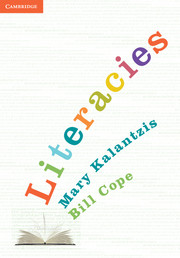Book contents
- Frontmatter
- Contents
- Acknowledgements
- Introduction The work of learning and teaching literacies
- Part A The ‘Why’ of Literacies
- Part B Approaches to Literacies
- Part C The ‘What’ of Literacies
- Part D The ‘How’ of Literacies
- Chapter 12 Literacies to think and to learn
- Chapter 13 Literacies pedagogy
- Chapter 14 Literacies and learner differences
- Chapter 15 Literacies standards and assessment
- References
- Index
Chapter 15 - Literacies standards and assessment
from Part D - The ‘How’ of Literacies
- Frontmatter
- Contents
- Acknowledgements
- Introduction The work of learning and teaching literacies
- Part A The ‘Why’ of Literacies
- Part B Approaches to Literacies
- Part C The ‘What’ of Literacies
- Part D The ‘How’ of Literacies
- Chapter 12 Literacies to think and to learn
- Chapter 13 Literacies pedagogy
- Chapter 14 Literacies and learner differences
- Chapter 15 Literacies standards and assessment
- References
- Index
Summary
Overview
This chapter introduces the idea of ‘standards’, which specify expected learning outcomes at different levels of learning across a variety of subject areas – literacy or literacies for instance. Assessments measure student outcomes against these standards. The chapter contrasts the fundamental assumptions and processes of standards or achievement assessments with intelligence assessments. It then goes on to explore ‘selected response’ and ‘supplied response’ assessments. Finally, we explore the possibilities of bringing formative assessment (providing direct feedback to learners) closer to summative assessment (providing a retrospective view of what learners have achieved).
Literacies standards
The idea and practice of ‘standards’
Educational standards are statements of expected learning outcomes in particular subject areas at particular grade or year levels. Here is an example of a standards statement from the Literacy area in the US Common Core State Standards:
By the end of Grade 7, students should be able to write informative/explanatory texts to examine a topic and convey ideas, concepts, and information through the selection, organization, and analysis of relevant content.
a Introduce a topic; organize ideas, concepts, and information, using strategies such as definition, classification, comparison/contrast, and cause/effect; include formatting (e.g., headings), graphics (e.g., charts, tables), and multimedia when useful to aiding comprehension .
b Develop the topic with relevant facts, definitions, concrete details, quotations, or other information and examples.
c Use appropriate transitions to clarify the relationships among ideas and concepts.
d Use precise language and domain-specific vocabulary to inform about or explain the topic.
e Establish and maintain a formal style.
f Provide a concluding statement or section that follows from the information or explanation presented.
- Type
- Chapter
- Information
- Literacies , pp. 401 - 420Publisher: Cambridge University PressPrint publication year: 2012



